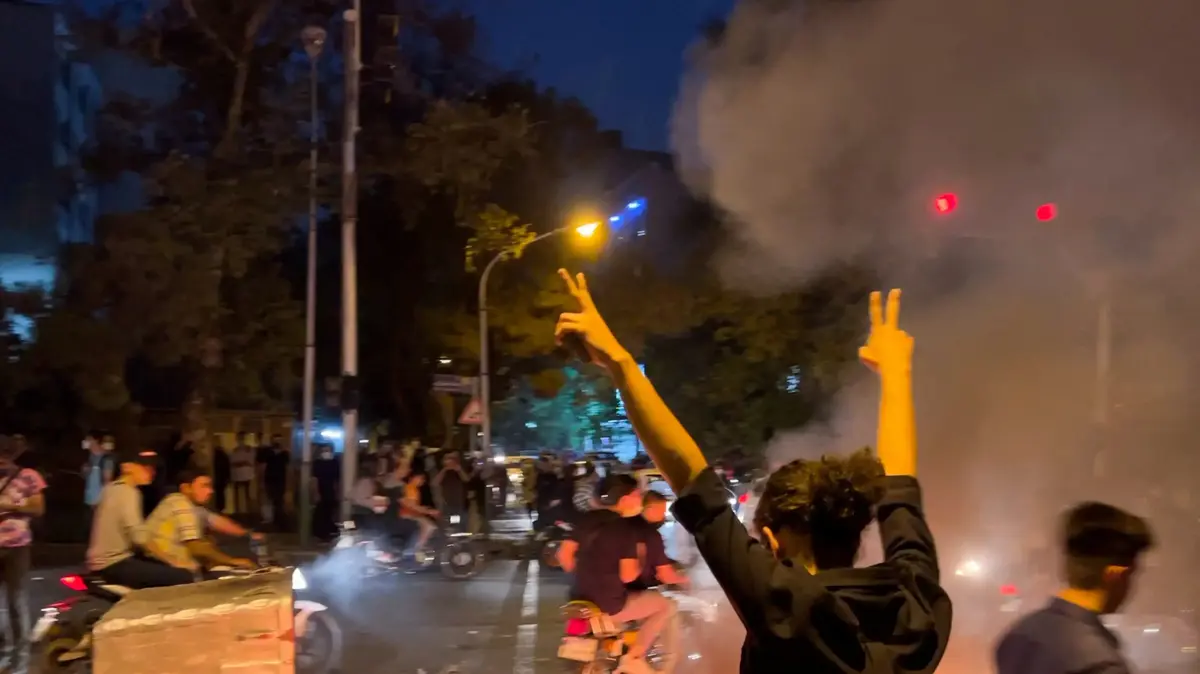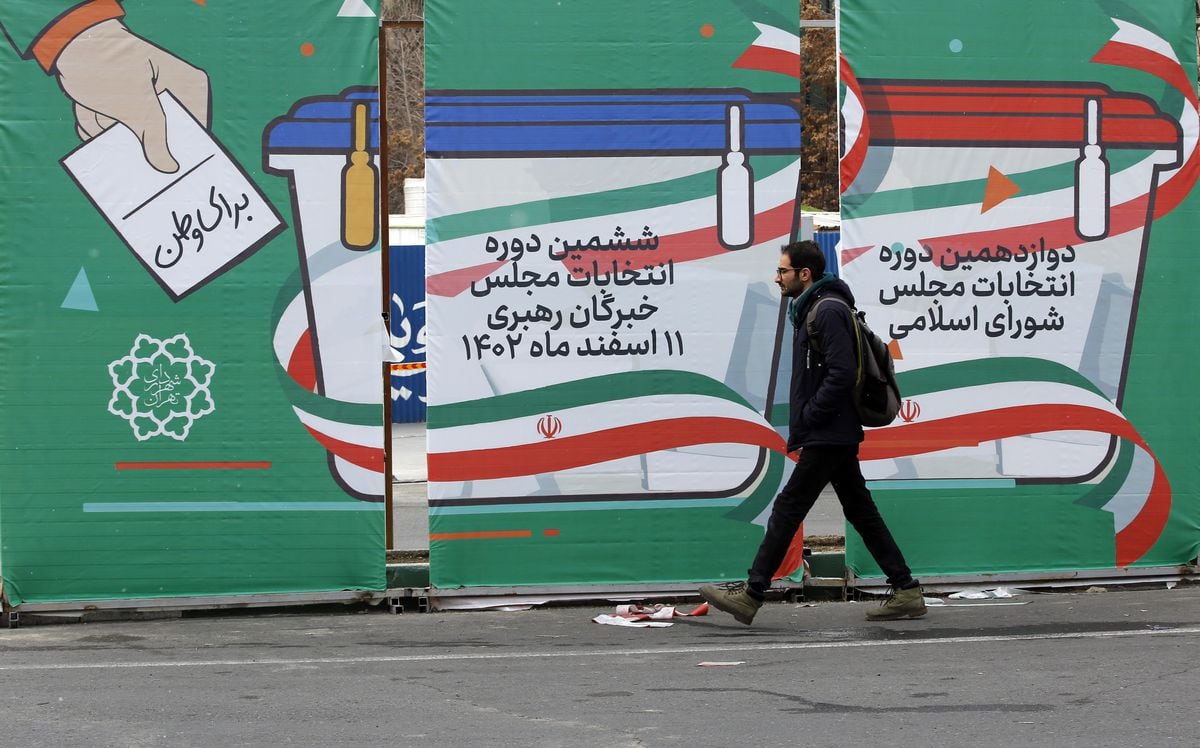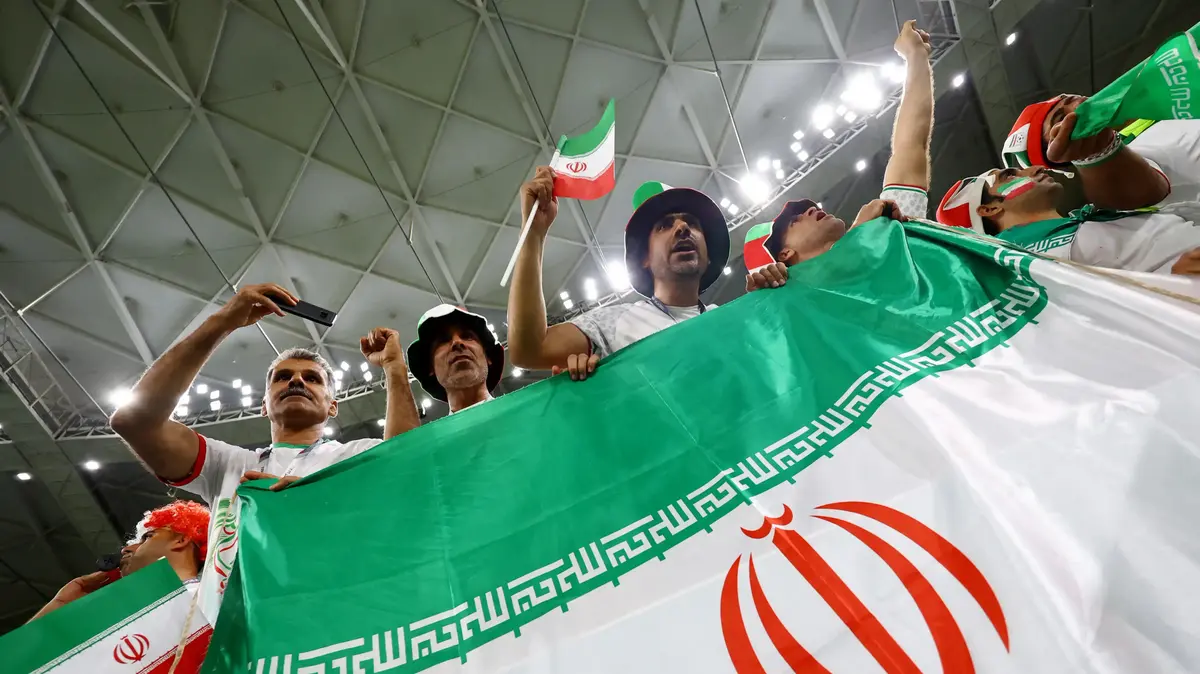Evin prison, in Tehran, is that place that many of its former inmates define as "hell."
Some of the at least 14,000 protesters that the United Nations estimates have been detained in protests against the regime that have lasted more than two months in Iran have ended up there.
A room in that prison is reserved to execute those sentenced to death, recounts a former prisoner, in an anonymous testimony transmitted to EL PAÍS by one of his relatives.
On the floor of that room, he says, "there is a big hole."
The walls of that hole were the last thing the Iranians saw who for years died there by stoning, explains the former prisoner, a legal method of execution in Iran, just like firing squads and crucifixion.
Also hanging, the procedure that has been used preferentially since 2008,
according to the Iranian NGO in exile Iran Human Rights.
Since November 13, five demonstrators detained in the protests have already been sentenced to death.
Twenty-one others, including a woman, face charges that could land them on the gallows, according to Amnesty International (AI).
In 2021, at least 314 people were executed in Iran, Amnesty notes.
83.5% of them without announcing the execution and, in some cases, without the family being notified or being able to say goodbye to their loved one, according to Iran Human Rights.
Iran was not only the second country in the world, behind China, to execute the most people last year.
It was also the one that executed the most women, according to the Iranian NGO, —14 out of a total of 24— and one of the few States that continues to legally kill people who committed crimes when they were still minors.
Even before the demonstrations began – triggered by the death in police custody on September 16 of the 22-year-old Mahsa Amini, arrested for wearing the veil improperly positioned – “Iran had executed 251 people, between January and June this year,” explains Yolanda Vega, an Amnesty specialist on Iran.
13 were women, says Iran Human Rights.
These figures make Amnesty fear that the number of those executed this year “is enormous”.
Above all, Vega stresses, because "the Iranian authorities are using the threat of death sentences as a form of intimidation and punishment to quell the protests and dissuade the population from joining them."
The Iranian regime “has instructed the courts to expedite trials, convictions and executions.
227 of the 290 members of the Iranian Parliament have urged the courts not to show leniency to those detained in the protests.
There are documents on specific cases in which prosecutors are asked to speed up the processes and the execution of sentences that are often justified with confessions obtained under torture”, affirms the Amnesty expert.
In one of the articles published by the propaganda of the Iranian regime, it was also reported that the execution of one of these protesters would be carried out "as quickly as possible and in public, to comfort the security forces."
That man had been accused of having killed a policeman, but both he and the rest of those convicted were prosecuted for charges "out of line with international law," Vega argues, such as "enmity with God" and "corruption on earth”, whose “ambiguous definition” offers “a blank check” to the courts to hand down capital sentences.
Iran routinely hangs some prisoners in public—as of 2021, only one case is known—using a crane to suspend them in a vacuum.
In certain cases of murder convictions, the relatives of the victim are the ones who operate the machine or personally remove the convict from the platform on which he is standing with the noose around his neck.
Death by hanging is not always quick or relatively lenient.
Some convicts expire after long minutes subjected to slow suffocation.
For the Spanish-Iranian political scientist Daniel Bashandeh, if the authorities try to quell the protests with the threat of hanging, they are achieving the opposite.
“These sentences represent a turning point, strengthening the cause of the protesters” in the face of an “internationally isolated regime, which needs to maintain a heavy hand.”
At least 416 people, including 51 children, have been killed so far by the repression, denounces Iran Human Rights.
Women
Among the crimes that are punishable by death in Iran —including heterosexual sex outside of marriage or between homosexuals—, one stands out as the cause of convictions: drug trafficking, which motivated more than 50% of those sentences in 2021. That accusation has been used in the past to eliminate opponents, says a report by Iran Human Rights.
The document alludes to Zahra Bahrami, 46, arrested in the 2009 anti-regime protests. This woman, the text continues, "was tortured to make her confess to drug-related charges in a fabricated case that ended with her execution on the 29th January 2011."
The application of the death penalty to women in Iran is preceded by additional torture because of their sex, according to the account of the former prisoner of Evin.
Many Muslims believe that if a woman dies a virgin, she is guaranteed paradise.
"For this reason, the damned virgins are raped the night before the execution to deprive them of Eden."
The women who were going to be stoned, says this Iranian, were bathed beforehand and covered with a white cloth from head to toe, which prevented them from seeing anything.
They were then put into the hole in the execution room, before being “stoned to death”.
In that prison, Evin, Nilufar Hamedi, the journalist who revealed the death of Mahsa Amini, and other detainees in the current protests are being held in solitary confinement.
Iranian women have been criminally responsible since they were nine years old;
the Iranians, from the age of 15. The profiles of those sentenced to death in Iran speak of poverty, which is often behind drug trafficking in that country, recalls Yolanda Vega, but above all of injustice.
Many of those executed in Iran in recent years had been accused of drug trafficking;
many other crimes committed in self-defense.
The cases highlighted by Iran Human Rights in its reports almost always have as their context the profound discrimination and abuse suffered by women and girls in that country.
Among the 164 Iranians executed between 2010 and 2021, according to that NGO, there are women and adolescents who killed trying to defend themselves from rape;
others, from violent spouses;
at least six had been married as children and two were mentally ill.
Follow all the international information on
and
, or in
our weekly newsletter
.
Subscribe to continue reading
Read without limits
Keep reading
I'm already a subscriber

/cloudfront-eu-central-1.images.arcpublishing.com/prisa/5I4Z265ISZFERMCB3ELNGJHFT4.jpg)













